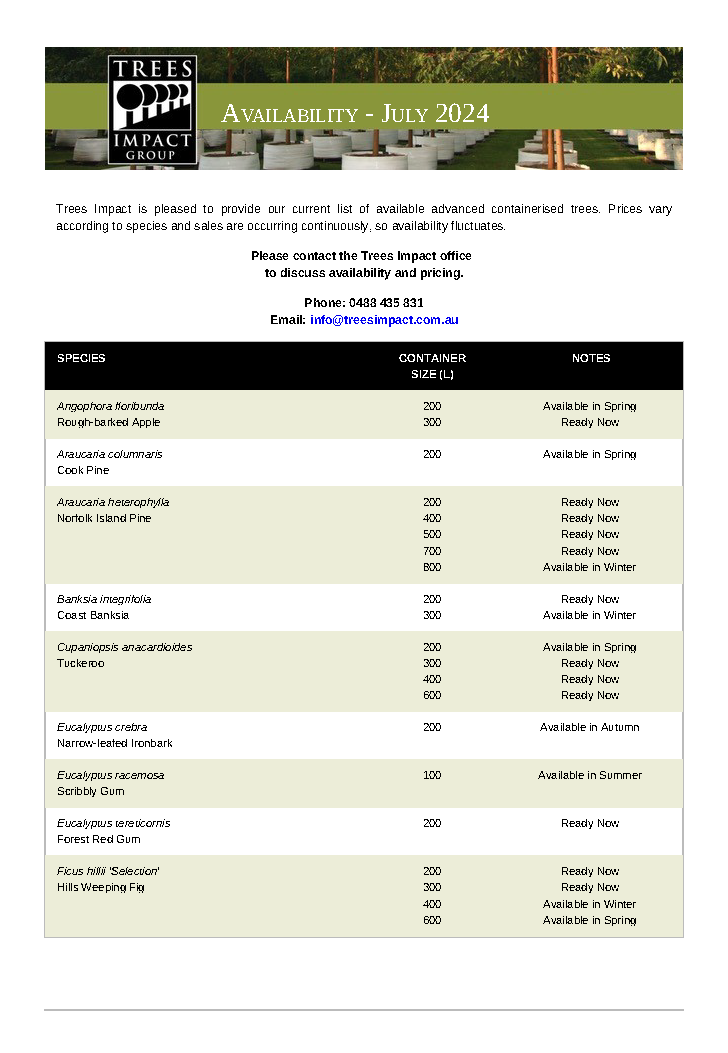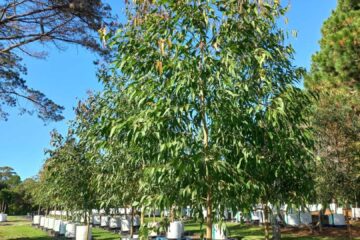Estimating mature tree diameter
For the trees we commonly grow, there is a wealth of information available which can provide estimates of mature height and, maybe, spread; but rarely is information offered about expected trunk diameter. Forestry texts will give estimates for forest-grown trees. However, these figures are unlikely to be representative of trees grown in urban situations.
Diameter at Breast Height (DBH) is an important descriptor of tree size and bulk. When making decisions in a number of situations, it is important that we can estimate what the DBH might be when the tree has matured. It can be used to estimate the ‘Zone of Upheaval’ or combined with expected tree height to estimate the volume of soil the tree will need, for long-term health and vigour (See: ‘Estimating Soil Volume Needs of Trees in Urban Situations‘).
So, the problem is: how do we work out what the DBH of a tree might be at maturity in an urban environment?
A SIMPLE RULE OF THUMB
Having searched the internet, perused the NATSPEC specification for trees, AS 2303:2015, and Trees Impact’s and other growers’ stocklists for any relevant information, we suggest the following simple formulae:
| Type of Tree | Formula |
| Category A trees: tall slender growing species (e.g. Corymbia citriodora, Betula pendula and some Maple species) | Estimated DBH = 2.5% expected tree height* |
| Category B trees: general species (will apply in most cases) | Estimated DBH = 4% expected tree height* |
| Category C trees: stockier / thick-stemmed species (e.g. Figs and heavy-stemmed conifers) | Estimated DBH = 5.5% expected tree height* |
*Use estimates for mature height for trees in urban (i.e. not forestry) growing environments.
[An example: Referring to information provided by growers, Lophostemon confertus BRUSH BOX has an estimated mature height of around 15m (when grown in urban settings).
BRUSH BOX is a Category B species therefore: Expected DBH = 15(m) x .04 = 0.6m (or 600mm) ]
RATIONALE
It is well known and well recorded that DBH varies with species. This variation needs to be accommodated in any method used to estimate DBH.
In Australian Standard 2303:2015 (appendix D: “Tree stock height and calliper”), tree species are divided into the same three categories of form we have used in the formulae above. It seems only logical that we pick up on that accepted breakdown of trees.
An internet search for information on DBH estimates suggests that DBH, as a percentage of tree height, varies from 2.0% – 3.0% for tall slender growing species through to 5% – 6% for stockier / thick-stemmed species, with general species somewhere in between.
Hence our simple rule of thumb for DBH, as a percentage of tree height:
- 2.5% for tall slender growing species;
- 4% for general species; and
- 5.5% for stockier/thick-stemmed species.
Note: The DBH values generated by this guideline will never be exact. Obviously, variations will occur due to species and site conditions. If you have access to DBH estimates based on specific information relating to the species planted and the site conditions, use it. Where such information is not available, the formulae above can be used as a tool to generate an ‘order of magnitude’ which should be useful when designing trees into the landscape successfully.

